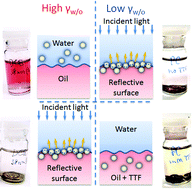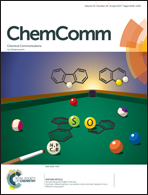Self-assembly and redox induced phase transfer of gold nanoparticles at a water–propylene carbonate interface†
Abstract
Citrate-stabilized gold nanoparticles were found to spontaneously self-assemble into a lustrous film at a bare water–propylene carbonate interface after vigorous shaking, due to the extremely low interfacial tension. The presence of an electron donor, tetrathiafulvalene, in the oil phase, led to the extraction of particles into the organic phase.



 Please wait while we load your content...
Please wait while we load your content...